FCK Union Tee — Nut-Type TWO-TOUCH Union Tee for Pneumatic Piping
The FCK Union Tee is a nut-tightening, TWO-TOUCH tube fitting engineered specifically for compressed-air systems. Constructed from durable engineered plastic and optimized for low-pressure pneumatic applications, this union tee provides corrosion- and chemical-resistant connections with excellent performance in environments subject to vibration. In industrial automation, machine building, packaging equipment and other pneumatic installations the FCK Union Tee is positioned as a reliable, long-life component where leak-tight joints and vibration resistance are essential.
Introduction
Pneumatic systems require fittings that combine mechanical reliability, chemical resistance and ease of service. The FCK Union Tee answers these demands with a TWO-TOUCH nut-type design that secures tubing using a threaded nut interface rather than relying solely on push-fit or barbed connections. This approach produces robust joints that withstand vibration and repeated assembly/disassembly while maintaining service life in corrosive or chemically active atmospheres.
This article provides a comprehensive technical review of the FCK Union Tee for engineers, installers and maintenance professionals. It covers the product’s functional principles, specifications, mechanical and material characteristics, selection guidance, installation and maintenance best practices, comparative analysis versus alternative fittings and practical use cases.
Technical Overview
Functional Description
The FCK Union Tee is a three-port union fitting intended to join three lengths of tubing in a “T” configuration. Each leg of the tee uses a nut-type union coupling, allowing the connected tube to be clamped and sealed by tightening a nut. The fitting is designed strictly for compressed air (non-lubricated or lightly lubricated) and supports system pressures up to 150 PSI (9.9 kgf/cm² / 990 kPa). The product also provides near-atmospheric vacuum performance down to -29.5 in Hg (-750 mm Hg / ~10 Torr).
TWO-TOUCH Nut-Type Mechanism
The distinctive TWO-TOUCH design denotes a two-stage engagement between the nut, sealing element and the body that ensures a positive mechanical grip plus redundant sealing. In practice this means:
- Primary mechanical engagement: the nut compresses a ferrule or clamp element around the tube outer diameter to provide axial retention against pull-out.
- Secondary sealing engagement: a molded elastomeric sealing surface (O‑ring or gasket) is compressed to form the fluid seal between tube and fitting.
This two-point strategy improves reliability in vibrating environments by separating the mechanical retention function from the sealing function — if micro-movement occurs, the mechanical clamp holds the tube and the elastomer maintains the pressure-tight seal.
Intended Applications and Limitations
The FCK Union Tee is optimized for compressed-air distribution and pneumatic actuation circuits, especially where vibration, cyclic loading and chemical exposure are concerns. It is not intended for combustible gases, flammable fluids, hydraulic oil systems or highly elevated temperatures — the operating temperature range is 32–140°F (0–60°C). Always verify application suitability before installation; do not use for gases or liquids outside the stated media limitations.
Specifications and Dimensions
Below are the key performance specifications and a representative sizing table for the FCK Union Tee family. Use these values for initial selection and layout; final mechanical installation and clearance checks should reference the manufacturer’s dimensional drawings for the specific model you order.
| Parameter | Value |
|---|---|
| Intended fluid | Compressed air only |
| Operating pressure | 0 to 150 PSI (0 to 9.9 kgf/cm² / 0–990 kPa) |
| Vacuum rating | Down to -29.5 in Hg (-750 mm Hg / ~10 Torr) |
| Temperature range | 32–140°F (0–60°C) |
| Tube OD options (metric) | 4, 6, 8, 10, 12 mm |
| Typical tube I.D. (nominal) | 2.5, 4.0, 5.5, 6.5, 8.0 mm (for 4–12 mm OD options) |
| Typical body material | Engineered plastic polymer (see Materials section) |
| Sealing elements | Elastomeric O-ring or gasket (NBR/EPDM options typically) |
Representative Dimensional Table
The following table provides illustrative external dimensions and weights for typical FCK Union Tee models by tube OD. These are representative – consult the factory drawing for manufacturing tolerances and exact values for any critical installation.
| Model Code (example) | Tube OD (mm) | Drilled I.D. (mm, typical) | Thread Type (example) | Overall Width A (mm) | Overall Height B (mm) | Weight (g) |
|---|---|---|---|---|---|---|
| FCK‑M10‑04 | 4 | 2.5 | M10×1 (metric parallel) | 28 | 25 | 8 |
| FCK‑M12‑06 | 6 | 4.0 | M12×1 | 34 | 30 | 12 |
| FCK‑M14‑08 | 8 | 5.5 | M14×1 | 40 | 36 | 18 |
| FCK‑M16‑10 | 10 | 6.5 | M16×1 | 46 | 42 | 26 |
| FCK‑M18‑12 | 12 | 8.0 | M18×1 | 54 | 48 | 34 |
Note: Thread designations above (M10–M18) are illustrative to show how a CK-style code may indicate metric thread outer diameters. Confirm thread pitch and sealing method for the exact part number you order: some models use metric parallel threads with O-rings/gaskets and others may use different thread forms.
Materials and Build Quality
The FCK Union Tee is produced from engineered plastic materials chosen to deliver a balance of mechanical durability, dimensional stability and chemical resistance. While the product family encompasses multiple variants optimized to specific operating envelopes, the typical materials and their technical advantages are described below.
Body and Nut Materials
- Engineered thermoplastics (typical): High-performance polymers such as acetal (POM), nylon (PA), or reinforced polypropylene are commonly used for pneumatic fittings. These materials provide good tensile strength, wear resistance and dimensional stability across the 0–60°C operating range.
- Advantages: Low density (lightweight), high resistance to corrosion and many chemicals, electrical insulating properties and low cost compared to metal alloys.
Sealing Elements and Ferrules
- Elastomers: Seals are typically molded from NBR (nitrile) or EPDM, selected for air service and resistance to oils and lubricants commonly present in pneumatic environments.
- Ferrule/Clamp: The compression element that provides axial retention may be plastic or plastic-backed with an elastomeric mating surface. This design reduces tube damage while maintaining effective clamping forces.
Material Considerations
Plastic fittings excel in environments with corrosive atmospheres (salt spray, cleaning chemicals) and where electrical insulation or low weight is advantageous. They are less suited where system temperatures exceed the polymer’s thermal limit or where contact with strong solvents, ketones, or chlorinated hydrocarbons may degrade polymer or elastomer components. For applications with aggressive chemicals, review a chemical compatibility chart and consult the manufacturer for validated options.
Key Features
The FCK Union Tee offers a combination of design features oriented toward reliable pneumatic installations. Below are the primary technical attributes with brief explanations of their practical importance.
- TWO-TOUCH Nut-Type Connection: Dual engagement (mechanical clamp and elastomeric seal) provides a robust, vibration-resistant joint and extends service life under dynamic loading.
- Plastic Construction: Engineered polymer materials offer excellent corrosion resistance, low weight and electrical insulation — reducing galvanic corrosion and making them suitable for wet or corrosive environments.
- Optimized for Low-Pressure Systems: Rated up to 150 PSI (9.9 kgf/cm²), ideal for compressed-air distribution, pneumatic actuators, and control circuits in industrial automation.
- Vacuum Capability: Vacuum-rated to approximately -29.5 in Hg, enabling use in suction or vacuum applications where full ambient pressure differential is required.
- Metric Tube Compatibility: CK-style ordering supports metric tube ODs (04–12 mm), simplifying selection for systems using standard pneumatic tubing sizes.
- Serviceability: Nut-type design allows disassembly and reassembly for maintenance or layout changes without damaging tubing as can occur with barbed fittings.
- Chemical Resistance: Polymer bodies and elastomeric seals resist many common industrial chemicals and cleaning agents used around pneumatic equipment.
Use Cases and Applications
The FCK Union Tee is well-suited to a broad range of pneumatic applications where leak-tight performance, chemical resistance and vibration endurance are priorities. Representative applications include:
Industrial Automation and Assembly Lines
In conveyor systems, pick-and-place robots and automated assembly stations, fittings are often subjected to cyclical stresses and vibration. The TWO-TOUCH FCK Union Tee provides secure air distribution points for cylinder actuation, valve manifolds and air preparation units while minimizing maintenance intervals due to loosening or micro-leaks.
Packaging Machinery
Packaging equipment combines high-speed motion with shock and occasional exposure to cleaning solvents. The FCK Union Tee’s plastic construction resists corrosion and simplifies machine hygiene while maintaining reliable air supply to clamps, grippers and ejectors.
Material Handling and Automation Cells
Pneumatic circuits used in feeders, sorters and automated storage were designed for reliability. Union tees serve branching points in compressed-air manifolds; the FCK design aids quick reconfiguration and leak-resistant operation in high-vibration forklifts or conveyor interfaces.
Laboratory and Instrumentation
Where metal contamination must be minimized or electrical isolation is required, plastic fittings are preferred. The FCK Union Tee’s clean-air compatibility and material inertness make it suitable for lab automation, low-pressure vacuum handling and test fixtures.
Field Service and Repair
Technicians benefit from the serviceability of the nut-type fitting: replacement tubing can be removed and refitted quickly without sacrificing seal quality, reducing machine downtime and spare parts complexity.
Comparison to Alternative Fitting Types
Below is a technical comparison between the FCK Union Tee and common alternatives: metal union tees, push-to-connect (push-in) tees and barbed tees. The table highlights major differences relevant to selection.
| Attribute | FCK Union Tee (nut-type, plastic) | Metal Union Tee (brass/steel) | Push-to-Connect Tee | Barbed Tee |
|---|---|---|---|---|
| Vibration resistance | High — TWO-TOUCH mechanical+seal | Very high — metal strength | Moderate — retention relies on collet grip | Moderate to low — can slip if not clamped |
| Corrosion/chemical resistance | High (plastics) | Lower — metal corrosion risk unless plated | Good — depends on polymer used | Good — depends on tubing and clamps |
| Serviceability | High — nuts allow disassembly | High — serviceable | Very high — push/pull re-seat | Low — often requires cutting tubing |
| Installation speed | Moderate — requires nut tightening | Moderate — requires tools | Fast — push-fit | Fast but may require clamps |
| Temperature tolerance | Moderate (0–60°C typical) | High (wide temp range) | Moderate (depends on polymer) | Moderate (depends on tubing) |
| Typical cost | Low to moderate | Moderate to high | Moderate | Low |
This comparison demonstrates the FCK Union Tee’s balance between vibration resistance, corrosion resistance and maintainability — a combination that often makes it preferable where push-to-connect fittings lack mechanical retention or where metal fittings are unnecessarily heavy or susceptible to corrosion.
Benefits and Limitations
Benefits
- Vibration resilience: TWO-TOUCH mechanism reduces risk of leaks under dynamic loading.
- Corrosion resistance: Plastic body resists rust and many corrosive agents found in production environments.
- Serviceability: Nut-type connections permit repeated assembly without destroying tubing ends.
- Vacuum capability: Suitable for applications requiring vacuum down to ~10 Torr.
- Lightweight: Polymer construction reduces mass and inertial loading on assemblies.
- Cost-effective: Often lower cost than metal union fittings for similar service envelopes.
Limitations
- Temperature ceiling: Typical maximum of 60°C limits high-temperature pneumatic or steam applications.
- Chemical constraints: While resistant to many substances, certain solvents (strong ketones, chlorinated hydrocarbons) can attack plastics or elastomers — verify compatibility for aggressive chemistries.
- Pressure cap: Rated to 150 PSI; not intended for high-pressure hydraulic service.
- Thread and sealing specifics: Some metric-thread variants require O‑ring/gasket sealing rather than PTFE tape; incorrect thread sealing technique can cause leaks or damage.
Installation and Maintenance Guide
Correct installation and periodic maintenance are essential to maximize performance and service life of the FCK Union Tee. The procedure below outlines recommended best practices for technicians and engineers.
Pre-Installation Checks
- Confirm model selection: verify tube OD, thread specification and operating pressure/temperature exceed application requirements.
- Inspect parts: check for shipping damage, cracks or missing seal elements (O‑rings, ferrules).
- Tube compatibility: ensure tubing material (polyurethane, nylon, etc.) and wall thickness match fitting design.
Tube Preparation
- Cut tubing squarely using a dedicated tubing cutter. Avoid angled or ragged cuts that compromise sealing.
- Deburr the cut end if burrs are present; for soft polymers this is typically minimal but necessary for a clean fit.
- Check tube end for contamination and clean with a lint‑free cloth if necessary.
Assembly Procedure
- Slide the nut (and ferrule, if separate) onto the tubing in the proper orientation.
- Insert the tube fully into the fitting body until it bottoms against the internal stop.
- Hand‑tighten the nut until it seats against the fitting body.
- Apply final tightening. For plastic nut-type fittings the typical approach is to tighten the nut until seating occurs and then apply an additional small angular turn (commonly 1/6 to 1/4 of a turn) to compress the ferrule and seal. Do not overtighten — excessive torque can crack plastic components or deform the tubing.
- Where manufacturer torque values are available, use a calibrated torque tool to ensure consistent assembly torque across fittings.
Note: Do not apply PTFE tape or pipe sealant to metric parallel threads that are designed to seal via an O‑ring or gasket — doing so can prevent proper seating and cause leaks. For tapered pipe threads, follow the manufacturer’s guidance on thread sealing.
Leak Testing and Commissioning
- Perform a pressure test at or slightly above expected operating pressure (within safe limits) and inspect joints for leaks.
- Apply a soapy water solution to joints and look for bubble formation; alternatively use an approved leak-detection fluid.
- If leaks are detected, depressurize system before disassembly. Re‑inspect seals and ferrules, replace damaged parts, and re‑assemble per procedure.
Inspection and Preventive Maintenance
- Establish periodic inspections — typical intervals are 3–12 months depending on duty cycle, vibration levels and operating environment.
- At each inspection, check for: external cracks or discoloration in plastic parts, hardened or swollen seals, evidence of air leakage, and security of nuts.
- Replace elastomeric seals after service life indicators (loss of elasticity, cracking) or during scheduled maintenance to avoid unplanned leaks.
- Use manufacturer-specified spare parts where possible to ensure compatibility.
Cleaning
- Disconnect and depressurize before cleaning. Wipe the fittings with a cloth using mild detergent and water.
- Avoid aggressive solvents (e.g., acetone, MEK) and chlorinated cleaners that can attack both polymer and elastomer components.
Selection and Ordering Guide
FCK Union Tee parts use a CK-style ordering code. Understanding the code and the tube/thread mapping is critical to ordering the correct component for your system. Below is a decoding guide and representative examples.
CK-Style Ordering Format
Typical ordering codes follow a pattern such as: CK [Thread Code] [Tube Code] or FCK-[Thread]-[TubeCode]. The three components identify model type, thread or joint variant and tube outer diameter.
- Thread Code: “M10”, “M12”, “M14”, “M16” etc. indicating metric thread outer diameter (nominal).
- Tube Code: Numeric codes “04, 06, 08, 10, 12” corresponding to tube O.D. in mm (4, 6, 8, 10, 12 mm respectively).
Representative Ordering Examples
- FCK‑M10‑06 — FCK series union tee, M10 thread variant, for 6 mm O.D. tubing.
- FCK‑M12‑08 — FCK series union tee, M12 thread variant, for 8 mm O.D. tubing.
- FCK‑M14‑10 — FCK series union tee, M14 thread variant, for 10 mm O.D. tubing.
- FCK‑M16‑12 — FCK series union tee, M16 thread variant, for 12 mm O.D. tubing.
Always confirm the full part number with the supplier, as suffixes may indicate seal material (NBR versus EPDM), nut color, or other design options such as a locking feature or pre-applied thread seal.
Performance Considerations and Best Practices
Pressure Drop and Flow
Union fittings introduce some flow restriction due to the internal geometry and the change in flow direction at the tee junction. For most low-pressure pneumatic systems operating under normal flow rates, the incremental pressure drop across an FCK Union Tee is negligible. However, for systems with long tubing runs, high flow rates, or where precise timing of actuator response is required, account for small pressure losses through junctions and ensure tubing I.D. is adequate for the expected volumetric flow.
Managing Vibration and Dynamic Loads
- While the two-touch mechanism improves vibration resistance, additional mechanical support for tubing (clamps, brackets) reduces stress on fittings and prevents transmit of large dynamic loads to the joints.
- Route tubing to minimize unsupported spans and reduce bending near the fitting entry points.
Compatibility with Tubing Materials
Common compatible tubing materials include polyurethane (PU), nylon (PA) and polyethylene variants commonly used in pneumatic installations. PU tubing provides excellent flexibility and vibration damping; nylon offers higher abrasion resistance and lower permeability. Select tubing with compatible outer diameter and wall thickness for secure engagement with the FCK ferrule/clamp.
Thread Sealing Notes
Understand the thread form and sealing method for your particular FCK model:
- If the part uses metric parallel threads that seal via an O‑ring or gasket, do not use thread sealant tape — it may prevent proper mechanical engagement.
- If a tapered thread variant is provided (less common for metric fittings), use an approved thread sealant in accordance with the manufacturer’s instructions.
Case Study: Implementing FCK Union Tees in a Robotic Assembly Cell
Scenario: An assembly line uses pneumatic grippers and clamp cylinders on robotic arms. The environment exposes fittings to constant vibration and occasional overspray from cleaning agents. A specification calls for lightweight fittings that are easy to service and that minimize corrosion risk.
Solution: FCK Union Tees were selected for branching air supply lines to gripper manifolds. Engineers chose 6 mm and 8 mm tube sizes (FCK‑M12‑06 and FCK‑M14‑08) based on flow requirements and space constraints. The TWO-TOUCH nut design ensured joints remained leak-free despite continuous robot motion. Plastic construction resisted cleaning agent exposure, and the lightweight fittings reduced cantilevered mass at the robot wrist.
Outcome: After six months of operation the system showed no measurable leak growth at the union tees. Service technicians found the nut-type fittings straightforward to replace during planned maintenance windows, avoiding downtime associated with more permanent fittings.
Troubleshooting Common Issues
- Leak at assembly: Possible causes — insufficient nut tightening, damaged O‑ring or ferrule, or dirt on tube end. Remedy — depressurize, disassemble, inspect/replace seals, clean tube, reassemble following recommended torque procedure.
- Tube pull-out: Possible causes — wrong tube OD, damaged ferrule, or insufficient nut engagement. Remedy — verify tube dimension, replace ferrule/assembly and tighten per instructions.
- Cracked nut or body: Possible causes — overtightening or impact damage. Remedy — replace damaged component and reassess assembly torque and handling procedures.
Regulatory and Safety Considerations
When integrating pneumatic fittings into machines that fall under machinery safety directives or standards, ensure that:
- Fittings and components are installed in accordance with applicable local and international standards (e.g., ISO, ANSI) and the machine builder’s safety requirements.
- Pressure relief and safety interlocks are used to prevent over-pressurization beyond the fittings’ rated limits.
- Personnel follow lockout/tagout procedures and depressurize pneumatic systems before maintenance to prevent injury.
Conclusion
The FCK Union Tee combines a TWO-TOUCH nut-type coupling with engineered plastic construction to deliver a reliable, vibration-resistant solution for compressed-air piping. Its design targets low-pressure pneumatic systems where corrosion resistance, serviceability and long-term performance are important. With a working pressure to 150 PSI, near-full vacuum capability and metric tube compatibility, the FCK Union Tee is suitable for a wide range of industrial automation, packaging, laboratory and material handling applications.
Selection should be driven by tube size, thread type and the chemical and thermal environment. Proper installation practice — correct tube preparation, appropriate torque and periodic inspection — will ensure maximum service life and minimal downtime. For specialized applications, consult the manufacturer for detailed drawings, torque specifications and validated material compatibility data.
If you require a product datasheet, CAD models or assistance identifying the correct part number for your system, contact your FCK distributor or authorized technical support with application details including tube OD, desired thread type and operating conditions.

 Tiếng Việt
Tiếng Việt
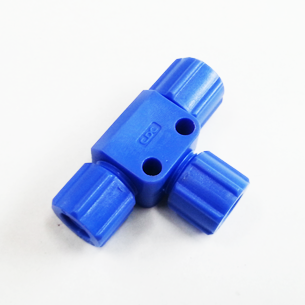
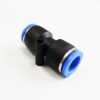
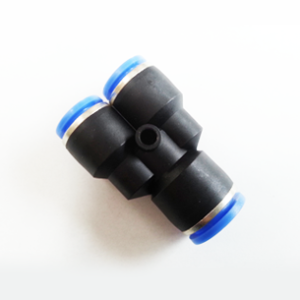
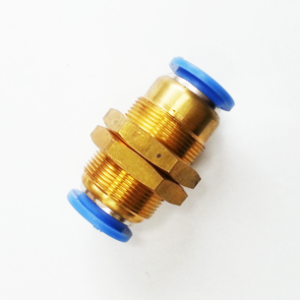
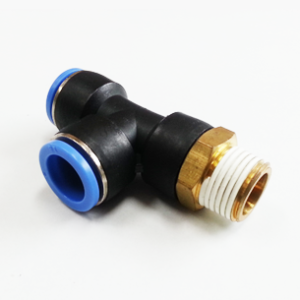
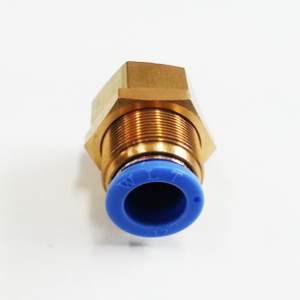
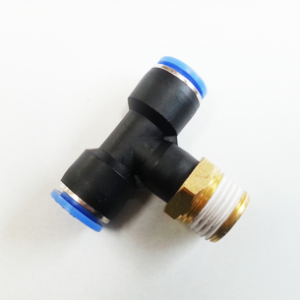
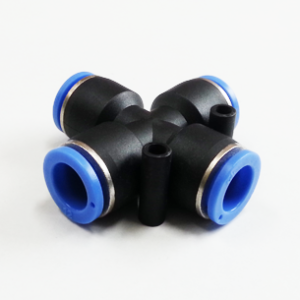
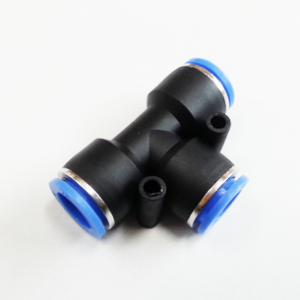

Reviews
There are no reviews yet.